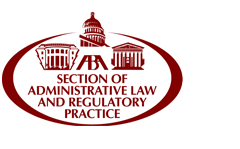Article Title
A Cost-Benefit Interpretation of the "Substantially Similar" Hurdle in the Congressional Review Act: Can OSHA Ever Utter the E-Word (Ergonomics) Again?
Volume
63
Issue
4
First Page
707
Abstract
Congress has always had the power to overturn a specific regulation promulgated by an executive branch agency and, as the author of the underlying statutes under which the agencies regulate, has also always been able to amend those statutes so as to thwart entire lines of regulatory activity before they begin. But in 1996, Congress carved out for itself a shortcut path to regulatory oversight with the passage of the Congressional Review Act (CRA), and can now veto a regulation by passing a joint resolution rather than by passing a law. There is no question that Congress can now kill a regulation with relative ease, although it has only exercised that ability once in the fifteen years since the passage of the CRA. It remains ambiguous, however, whether Congress can use this new mechanism to, in effect, do to a regulation what the Russian nobles reputedly did to Rasputin—poison it, shoot it, stab it, and throw its weighted body into a river—that is, to veto not only the instant rule it objects to, but forever bar an agency from regulating in that area. From the point of view of the agency, the question is, “What kind of phoenix, if any, is allowed to rise from the ashes of a dead regulation?” This subject has, in our view, been surrounded by mystery and misinterpretations, and is the area we hope to clarify via this Article.
A coherent and correct interpretation of the key clause in the CRA, which bars an agency from issuing a new rule that is “substantially the same” as one vetoed under the CRA, matters most generally as a verdict on the precise demarcation of the relative power of Congress and the Executive. It matters broadly for the administrative state, as all agencies puzzle out what danger they court by issuing a rule that Congress might veto (can they and their affected constituents be worse off for having awakened the sleeping giant than had they issued no rule at all?). And it matters most specifically for the U.S. Occupational Safety and Health Administration (OSHA), whose new Assistant Secretary is almost certainly concerned whether any attempt by the agency to regulate musculoskeletal disorders (“ergonomic” hazards) in any fashion would run afoul of the “substantially the same” prohibition in the CRA.
The prohibition is a crucial component of the CRA, as without it the CRA is merely a reassertion of authority Congress always had, albeit with a streamlined process. But whereas prior to the CRA Congress would have had to pass a law invalidating a rule and specifically state exactly what the agency could not do to reissue it, Congress can now kill certain future rules semiautomatically and perhaps render them unenforceable in court. This judicial component is vital to an understanding of the “substantially the same” prohibition as a legal question, in addition to a political one: whereas Congress can choose whether to void a subsequent rule that is substantially similar to an earlier vetoed rule (either for violation of the “substantially the same” prohibition or on a new substantive basis), if a court rules that a reissued rule is in fact “substantially the same” it would be obligated to treat the new rule as void ab initio even if Congress had failed to enact a new veto.
In this Article, we offer the most reasonable interpretation of the three murky words “substantially the same” in the CRA. Because neither Congress nor any reviewing court has yet been faced with the need to consider a reissued regulation for substantial similarity to a vetoed one, this is “uncharted legal territory.” The range of plausible interpretations runs the gamut from the least daunting to the most ominous (from the perspective of the agencies). To foreshadow the extreme cases briefly, it is conceivable that even a verbatim identical rule might not be “substantially similar” if scientific understanding of the hazard or the technology to control it had changed radically over time. At the other extreme, it is also conceivable that any subsequent attempt to regulate in any way whatsoever in the same broad topical area would be barred. We will show, however, that considering the legislative history of the CRA, the subsequent expressions of congressional intent issued during the one legislative veto of an agency rule to date, and the bedrock principles of good government in the administrative state, an interpretation of “substantially similar” much closer to the former than the latter end of this spectrum is most reasonable and correct. We conclude that the CRA permits an agency to reissue a rule that is very similar in content to a vetoed rule, so long as it produces a rule with a significantly more favorable balance of costs and benefits than the vetoed rule.
We will assert that our interpretation of “substantially similar” is not only legally appropriate, but arises naturally when one grounds the interpretation in the broader context that motivated the passage of the CRA and that has come to dominate both legislative and executive branch oversight of the regulatory agencies: the insistence that regulations should generate benefits in excess of their costs. We assert that even if the hazards addressed match exactly those covered in the vetoed rule, if a reissued rule has a substantially different cost–benefit equation than the vetoed rule, then it cannot be regarded as “substantially similar” in the sense in which those words were (and also should have been) intended.
